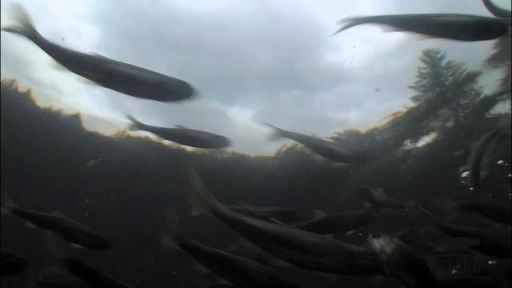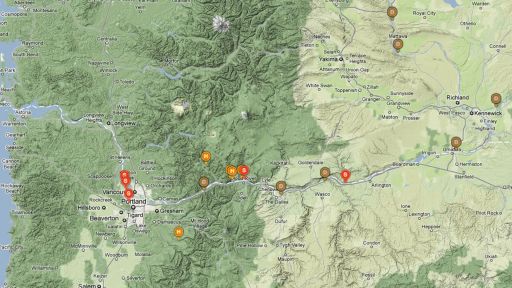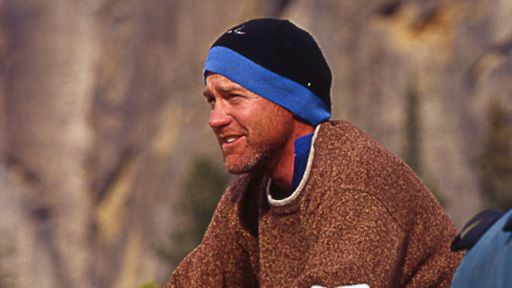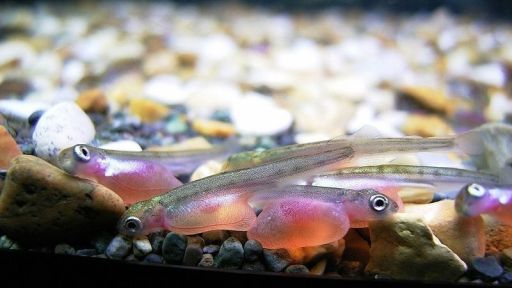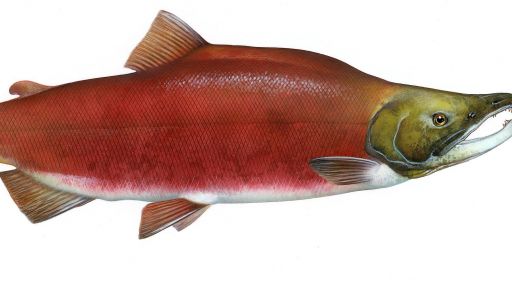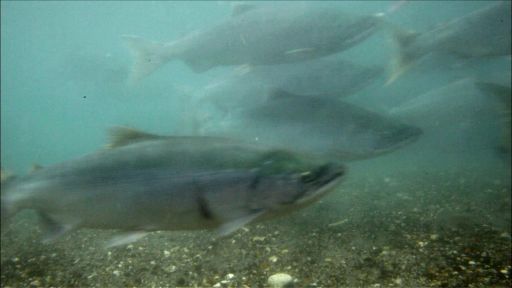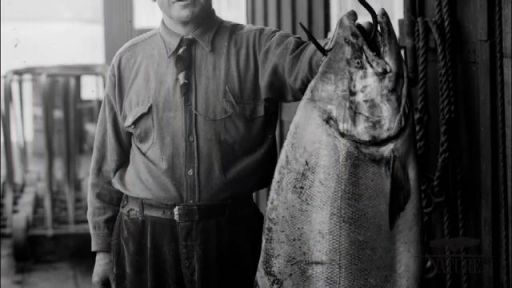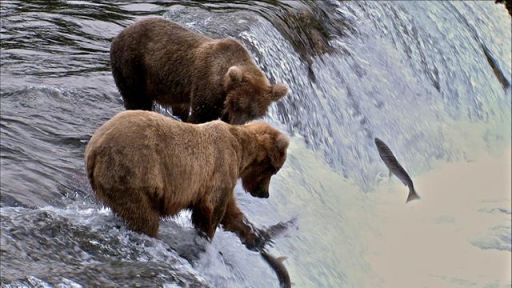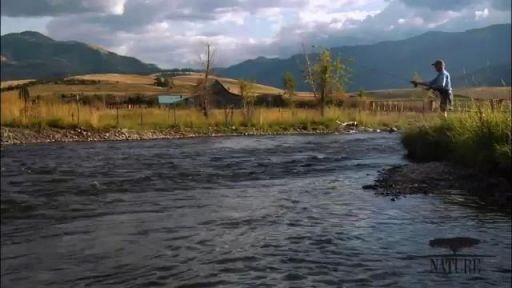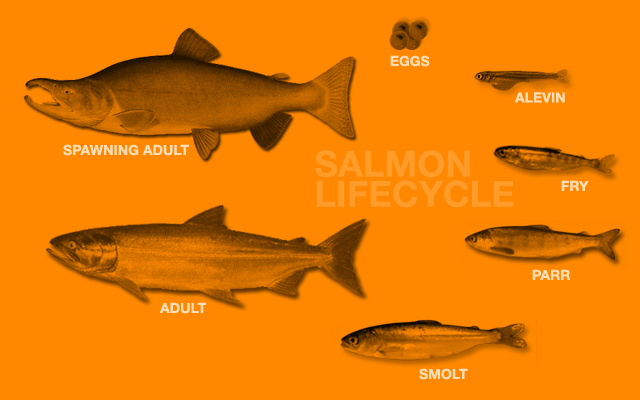
Wild salmon begin their lives in rivers and streams, migrate to the sea, where they spend the next several years until they mature, then return the to the same rivers and streams to spawn and die. It is a true life cycle, ending where it began. Few organisms spend time as salmon do in both fresh and salt water. Salmon are anadromous (derived from the Greek, meaning running upward), migrating upriver from the sea to spawn, facing myriad obstacles along the way in order to create a new generation. Their journey is arduous and their gifts to the ecosystems they travel through are countless. Here is a brief look at the lifecycle of one of the world’s most popular and most important fish.
Before laying her eggs, the female uses her tail to create a depression in the riverbed, known as a redd. Males compete to fertilize females’ eggs, fighting for position using various courtship displays or mimicry behaviors. The dominant male swims alongside the female, quivering and gaping, which stimulates the female to release her roe into the redd. To fertilize the eggs, the male then deposits milt, or sperm. After the female covers the eggs with gravel, she moves on to create a new redd. During the spawning period, one female may create up to seven separate redds and lay between 2500-7000 eggs.
The embryos hatch into small larval fish called alevins. The highly vulnerable alevins live underneath gravel in the streambed for protection and receive all their nutrients from small yolk sacs attached to their bodies.
Once the yolk sac is fully absorbed, the salmon emerge from the gravel as fry, and begin to move about and feed on their own. Chum and pink fry start swimming toward the estuaries, while other species of salmon wait months, even years, before heading downstream.
The next stage of salmon development, the parr stage, is characterized by the vertical bars that develop on the sides of their bodies. These bars, or parr marks, help camouflage the small fish from predators. This stage can last months or years, depending on the species.
When the dark parr stripes fade, the young salmon are left with bright silver scales—a color that will camouflage them in ocean environments. Now seaward-migrating smolts, these young salmon swim downstream, leaving their familiar fresh-water homes. In the estuaries, smolts go through a series of physiological and morphological changes that allow for a transition to life in salt water. Before entering the ocean, salmon must change their osmoregulation process, undergoing physical adaptations of their gills and kidneys that help build a tolerance for salt water.
In the ocean, salmon travel in large, loose schools, and feed on small fish, krill, and crustaceans. They remain in the ocean for 2 to 8 years, traveling hundreds—even thousands of miles. Here, they develop into adult salmon. After spending a period of time at sea, salmon return to their home rivers and streams to spawn. In the brackish water of the estuaries, salmon change their osmoregulation process once more, this time acclimating to fresh water.
Adult salmon head upstream, toward their spawning grounds—usually the same waters in which their lives began. Once salmon begin the trip, they will not stop to feed, deriving all their energy from stored fats. At this stage, each species develops distinct physical characteristics. Bright colors replace silver scales and some males develop humps or hooked snouts, called kypes; these transformations result from changes to their fat composition, blood chemistry, and hormone levels. Salmon travel an average of 150 miles from the sea to reach their spawning grounds, and each trip contains its own set of obstacles: waterfalls, man-made dams, and hungry predators. If they successfully run that gauntlet, the adults lay and fertilize eggs that will hatch into a new generation of salmon.
Once salmon have spawned they are referred to as either spawned-out salmon, or kelts. Most salmon die within days or weeks of spawning. Nutrients from their carcasses fertilize the streams where their young will hatch and begin to grow. Certain species of salmon, like steelhead, that don’t die after spawning, will re-migrate to the ocean for another season.

